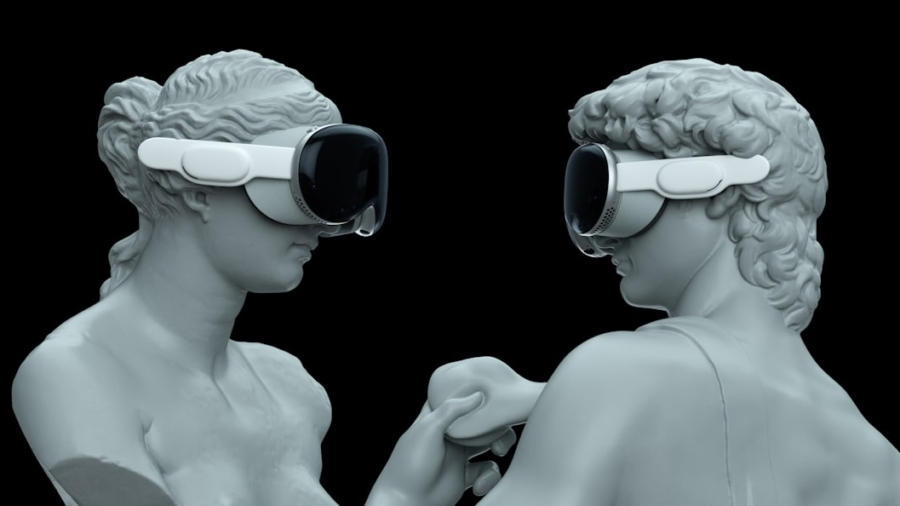Hybrid reality experiences represent a fascinating convergence of the physical and digital worlds, creating immersive environments that blend real-world elements with virtual enhancements. This innovative approach leverages technologies such as augmented reality (AR), virtual reality (VR), and mixed reality (MR) to create experiences that are not only interactive but also deeply engaging. The term “hybrid reality” encapsulates a spectrum of experiences where users can interact with both tangible objects and digital overlays, allowing for a seamless integration of the two realms.
As technology continues to advance, the potential applications of hybrid reality are expanding, influencing various sectors from entertainment to education, healthcare, and beyond. The allure of hybrid reality lies in its ability to transform how individuals perceive and interact with their surroundings. By superimposing digital information onto the physical world, users can gain new insights and perspectives that were previously unattainable.
For instance, imagine walking through a historical site where digital reconstructions of ancient structures appear alongside the ruins, providing context and depth to the experience. This blending of realities not only enhances engagement but also fosters a deeper understanding of complex subjects, making hybrid reality a powerful tool for both learning and entertainment.
Key Takeaways
- Hybrid reality blends physical and digital worlds, creating immersive experiences across various fields.
- Current technology enables advanced applications in entertainment, education, healthcare, and business.
- Hybrid reality enhances learning and training by providing interactive, realistic simulations.
- Ethical and privacy concerns must be addressed to ensure responsible use of hybrid reality.
- The future of hybrid reality promises transformative impacts on society, industry, and everyday life.
Current State of Hybrid Reality Technology
The current landscape of hybrid reality technology is characterized by rapid advancements and increasing accessibility. Major tech companies are investing heavily in research and development to refine the hardware and software that underpin these experiences.
These devices utilize sophisticated sensors and cameras to map the surroundings, allowing for precise placement of digital content that responds to user movements and actions. Moreover, the software ecosystem supporting hybrid reality is evolving at an impressive pace. Platforms like Unity and Unreal Engine are providing developers with robust tools to create immersive experiences that can be deployed across various devices.
The integration of artificial intelligence (AI) into hybrid reality applications is also noteworthy, as it enhances interactivity by enabling systems to understand user behavior and adapt accordingly. For example, AI-driven avatars can respond to user commands in real-time, creating a more lifelike interaction that blurs the lines between human and machine. As these technologies continue to mature, we can expect an increasing number of applications that leverage hybrid reality for diverse purposes.
The Impact of Hybrid Reality Experiences on Entertainment

In the realm of entertainment, hybrid reality experiences are revolutionizing how audiences engage with content. Traditional media formats are being reimagined through interactive storytelling that allows viewers to become active participants in the narrative. For instance, immersive theater productions are incorporating AR elements that enable audience members to use their smartphones or AR glasses to unlock additional layers of the story, enhancing their emotional connection to the characters and plot.
This shift from passive consumption to active participation is reshaping the entertainment landscape, offering new avenues for creativity and audience engagement. Video gaming is another sector where hybrid reality is making significant strides. Games like Pokémon GO have demonstrated the potential of augmented reality by encouraging players to explore their real-world environments while capturing virtual creatures.
This blend of physical activity and digital interaction not only promotes social engagement but also fosters a sense of community among players. Furthermore, developers are exploring ways to integrate hybrid reality into multiplayer experiences, allowing users to collaborate or compete in shared virtual spaces that overlay their physical surroundings. As technology continues to evolve, we can anticipate even more innovative gaming experiences that leverage hybrid reality to captivate audiences.
The Role of Hybrid Reality in Education and Training
Hybrid reality is poised to transform education and training by providing immersive learning experiences that enhance comprehension and retention. Traditional educational methods often struggle to engage students fully; however, hybrid reality offers a dynamic alternative that caters to various learning styles. For example, medical students can utilize mixed reality simulations to practice surgical procedures in a risk-free environment, gaining hands-on experience without the consequences associated with real-life operations.
This practical application of knowledge not only builds confidence but also reinforces theoretical concepts through experiential learning. In addition to medical training, hybrid reality can be applied across various disciplines, from history to science. Imagine students studying ancient civilizations while virtually exploring reconstructed archaeological sites or conducting chemistry experiments in a mixed reality lab where they can manipulate molecules in three dimensions.
Such experiences foster curiosity and critical thinking, encouraging students to engage deeply with the subject matter. Furthermore, educators can tailor hybrid reality experiences to meet individual student needs, providing personalized learning pathways that enhance overall educational outcomes.
The Potential for Hybrid Reality in Healthcare
The healthcare sector stands to benefit immensely from hybrid reality technologies, which can enhance patient care, medical training, and surgical procedures. One notable application is in preoperative planning, where surgeons can use mixed reality tools to visualize complex anatomical structures before entering the operating room. By overlaying 3D models onto a patient’s actual anatomy, surgeons can better understand the unique challenges they may face during surgery, leading to improved outcomes and reduced risks.
Moreover, hybrid reality can facilitate patient education by allowing individuals to visualize their medical conditions and treatment options in an interactive manner. For instance, patients could use AR applications to see how a particular treatment will affect their bodies or understand the anatomy involved in their conditions more clearly. This enhanced understanding can lead to better patient compliance and satisfaction as individuals feel more informed about their health decisions.
As hybrid reality continues to evolve within healthcare, it holds the promise of not only improving clinical practices but also empowering patients through knowledge.
Ethical and Privacy Considerations in Hybrid Reality Experiences

As hybrid reality technologies become more integrated into daily life, ethical and privacy considerations must be addressed to ensure responsible usage.
For instance, AR applications may track user locations or analyze facial expressions to enhance interactivity.
This data collection raises questions about consent and how this information is stored, shared, or potentially exploited by third parties. Additionally, there are ethical implications related to the potential for misinformation within hybrid reality experiences. As digital content becomes increasingly indistinguishable from reality, users may struggle to discern fact from fiction.
This challenge is particularly relevant in educational contexts where inaccurate information could lead to misunderstandings or misinformed decisions. Developers must prioritize transparency and accuracy in their applications while implementing safeguards against malicious content that could manipulate users’ perceptions or beliefs.
The Future of Hybrid Reality Experiences in Business and Industry
The future of hybrid reality experiences in business and industry is promising as organizations recognize the potential for enhanced collaboration, training, and customer engagement. In corporate settings, mixed reality tools can facilitate remote collaboration by allowing teams from different locations to interact within a shared virtual workspace. This capability not only reduces travel costs but also fosters innovation by enabling diverse teams to brainstorm ideas in real-time without geographical constraints.
Furthermore, businesses are leveraging hybrid reality for marketing purposes by creating immersive brand experiences that captivate consumers’ attention. For example, retailers can use AR applications to allow customers to visualize how products will look in their homes before making a purchase decision. This interactive approach not only enhances customer satisfaction but also reduces return rates by ensuring that consumers have a clear understanding of what they are buying.
As industries continue to explore the possibilities offered by hybrid reality, we can expect a wave of innovative applications that redefine how businesses operate and engage with their customers.
The Evolution of Hybrid Reality and Its Implications for Society
The evolution of hybrid reality experiences signifies a transformative shift in how individuals interact with both their physical environment and digital content. As technology continues to advance, the implications for society are profound—ranging from enhanced educational opportunities and improved healthcare outcomes to new forms of entertainment and business practices. However, as we embrace these innovations, it is crucial to remain vigilant about ethical considerations and privacy concerns that accompany such powerful technologies.
The journey toward fully realizing the potential of hybrid reality will undoubtedly involve navigating challenges related to data security, misinformation, and equitable access. By fostering an environment where ethical practices are prioritized alongside technological advancements, society can harness the benefits of hybrid reality while mitigating its risks. As we look ahead, it is clear that hybrid reality will play an increasingly integral role in shaping our interactions with the world around us—creating opportunities for deeper understanding, connection, and engagement across various domains of life.
In exploring the evolving landscape of hybrid reality experiences, it’s essential to consider the tools that enhance our engagement with these technologies. A related article that delves into the best software for creating compelling social media content can provide valuable insights for those looking to share their hybrid reality experiences effectively. You can read more about it in this comprehensive guide on the best software for social media content.
FAQs
What is hybrid reality?
Hybrid reality is a technology that blends physical and digital environments, allowing users to interact with both real-world and virtual elements simultaneously.
How does hybrid reality differ from virtual reality (VR) and augmented reality (AR)?
Unlike VR, which immerses users in a fully virtual environment, and AR, which overlays digital content onto the real world, hybrid reality combines aspects of both to create seamless interactions between physical and virtual spaces.
What are some current applications of hybrid reality?
Hybrid reality is used in fields such as gaming, education, healthcare, remote collaboration, design, and training simulations to enhance user engagement and provide immersive experiences.
What technologies enable hybrid reality experiences?
Key technologies include advanced sensors, spatial mapping, computer vision, wearable devices like AR glasses, 5G connectivity, and powerful graphics processing units (GPUs).
What are the potential benefits of hybrid reality in the future?
Future hybrid reality experiences could improve remote work, education, entertainment, and healthcare by offering more interactive, personalized, and accessible environments.
Are there any challenges facing the development of hybrid reality?
Challenges include high development costs, hardware limitations, privacy concerns, user comfort, and the need for standardized platforms and content.
How might hybrid reality impact social interactions?
Hybrid reality could enable more immersive and meaningful remote social interactions by blending physical presence with virtual enhancements, potentially reducing feelings of isolation.
Is hybrid reality accessible to everyone?
Currently, access depends on the availability and affordability of compatible devices and infrastructure, but ongoing advancements aim to make hybrid reality more widely accessible in the future.
What industries are expected to benefit most from hybrid reality?
Industries such as healthcare, education, manufacturing, entertainment, and retail are expected to see significant benefits from adopting hybrid reality technologies.
How can individuals prepare for the future of hybrid reality?
Staying informed about emerging technologies, developing digital literacy skills, and exploring current hybrid reality applications can help individuals adapt to and leverage future hybrid reality experiences.

